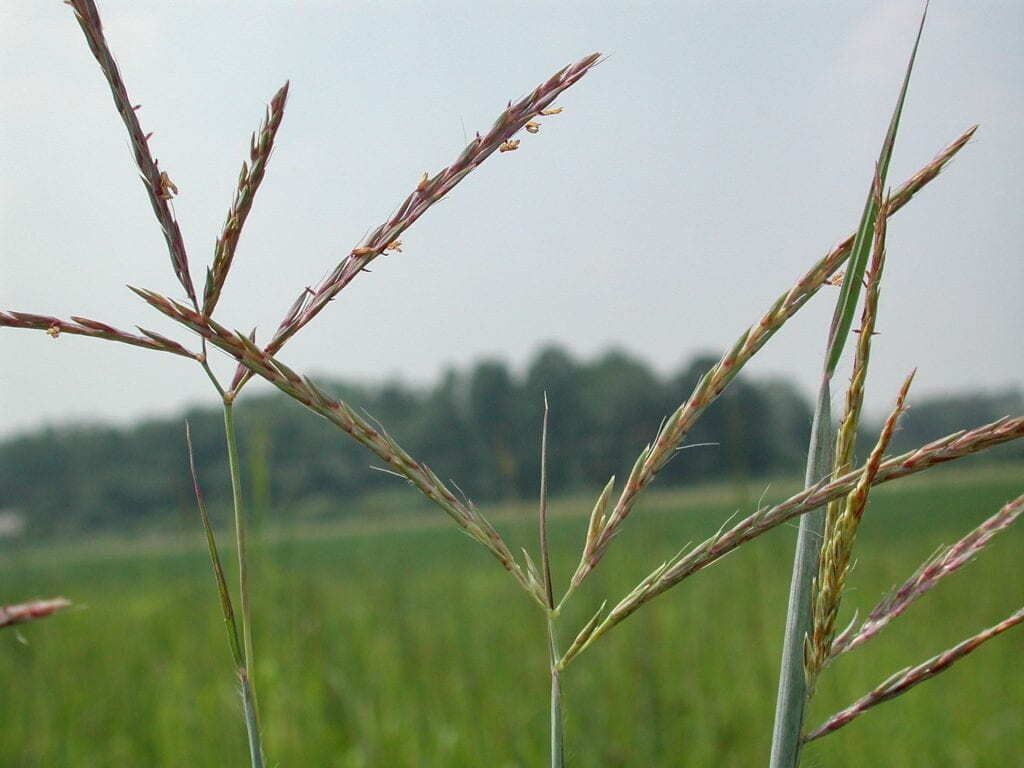
Planting Warm‑Season Native Grasses in Ohio: Better Soil, Better Habitat, Better Herds
In recent years, Ohio farmers are turning their attention to native warm‑season grasses such as big and little bluestem, Indiangrass, and switchgrass as a smart, multipurpose investment. These deep-rooted perennials, which thrive in summer heat, bring a trifecta of benefits to soil health, wildlife, and cattle a win‑win scenario for landowners, supported by NRCS programs.
Soil Health & Water Quality
Warm‑season native grasses build exceptionally deep root systems often over 6 feet that anchor soil, reduce erosion, and enhance infiltration. Their extensive roots also channel organic matter deep into the soil, increasing soil carbon and fertility while improving aggregate structure and water retention especially valuable on sloping or erodible fields. Furthermore, when planted as filter strips or contour buffers along waterways, these grasses help trap sediment and nutrients, reducing runoff and safeguarding water quality.
Wildlife Habitat & Biodiversity
Native grasses are a boon for Ohio’s wildlife. Their towering structure and native forage produce ideal nesting and brood-rearing habitats for quail, pheasants, and grassland songbirds. The National NRCS “Working Lands for Wildlife” initiative specifically the Northern Bobwhite in Grasslands program promotes integrating native grass plantings into working pastures. Managed grazing within these systems provides both livestock forage and essential wildlife cover.
Forage & Beef Production
Warm‑season grasses offer drought‑tolerant summer forage during the traditional “summer slump” of cool-season pastures. USDA and University of Tennessee research showed steers grazing switchgrass and bluestem gained 66–70% more weight per day than those on cool-season grasses like tall fescue. Weight gains ranged from 1.9 to 2.4 lbs./day, compared to just 1.6 lbs./day on fescue systems. Plus, by letting fescue rest during summer, these systems help mitigate fescue toxicosis and reduce fertilizer and feed costs.
NRCS Programs to Help You Plant
Through the Farm Bill’s Environmental Quality Incentives Program (EQIP) and Conservation Stewardship Program (CSP), NRCS provides cost‑share funding and technical support for establishing native warm‑season grasses and implementing prescribed grazing. Ohio’s NRCS has launched targeted initiatives like the Northern Bobwhite in Grasslands program which promotes warm‑season forage plantings across 30 southern counties, offering EQIP assistance to interested producers.
Key conservation practices supported include:
- Forage and biomass planting: seed native grasses and mixes tailored to Ohio’s soils.
- Prescribed grazing & rotational grazing systems: manage livestock to enhance forage use and wildlife benefits.
- Filter and buffer strips: control erosion and improve water quality.
Producers should contact their local NRCS office or Soil & Water Conservation District to explore opportunities. Applications for specific initiatives like the Northern Bobwhite in Grasslands program typically open annually and require a conservation plan.
Getting Started
Moving forward with native warm‑season grass means:
- Selecting suitable species adapted to site and needs (e.g., switchgrass for erosion control; bluestems for wildlife habitat).
- Preparing a firm, weed-free seedbed and planting at the recommended timing typically August to mid-September in Ohio.
- Implementing weed control and waiting for establishment. First‑year growth may be modest, but roots build quickly.
- Coordinating with NRCS to secure cost‑share and to help design your conservation plan.
Planting warm‑season native grasses in Ohio is a multifaceted win: it boosts soil health and water quality, enriches wildlife habitat, and supports livestock productivity. With NRCS programs like EQIP, CSP, and WLFW offering financial and technical support, now is the time to explore native grass integration on your farm. Reach out to your local NRCS or Soil & Water office today and reap the long‑term rewards for your land and livelihood.
The mission of the Madison Soil and Water Conservation District is to enhance and sustain the soil, water and related natural resources of Madison County through partnerships with landowners and others to provide research-based educational programs, technical assistance, and funding to promote a clean local environment. More information about our services, conserving natural resources, and events is available at www.madisonsoilandwater.com, or call our office at 740-852-4003 and ask for Broc Sehen-Wildlife Specialist.

